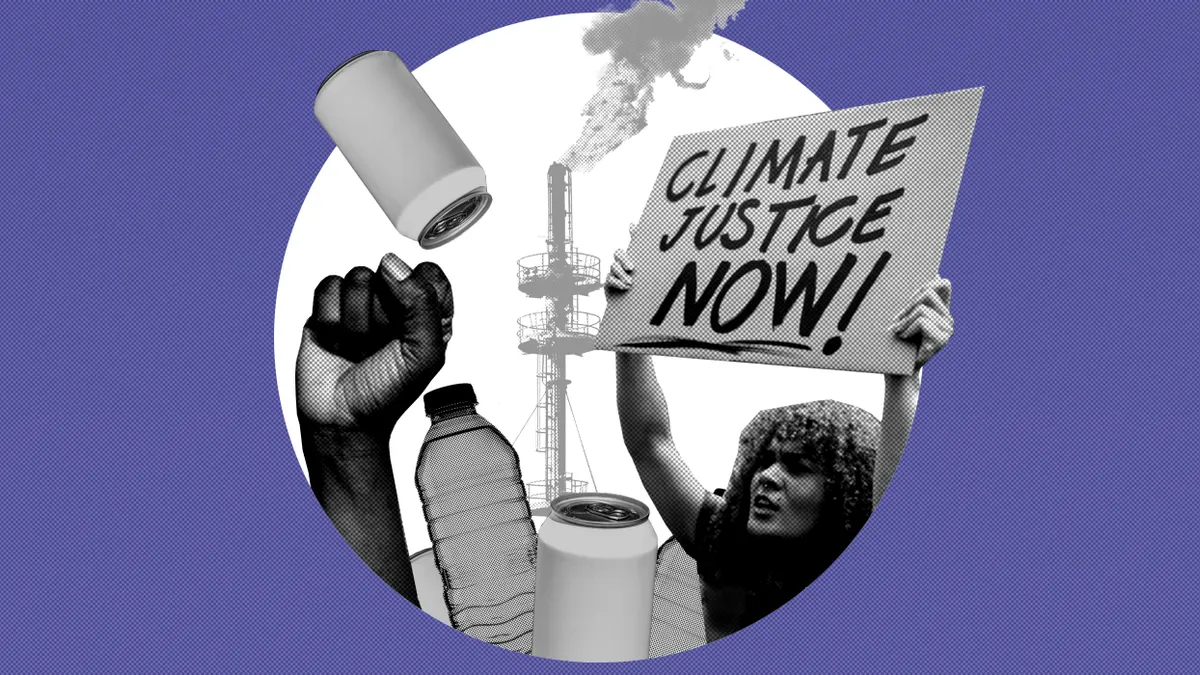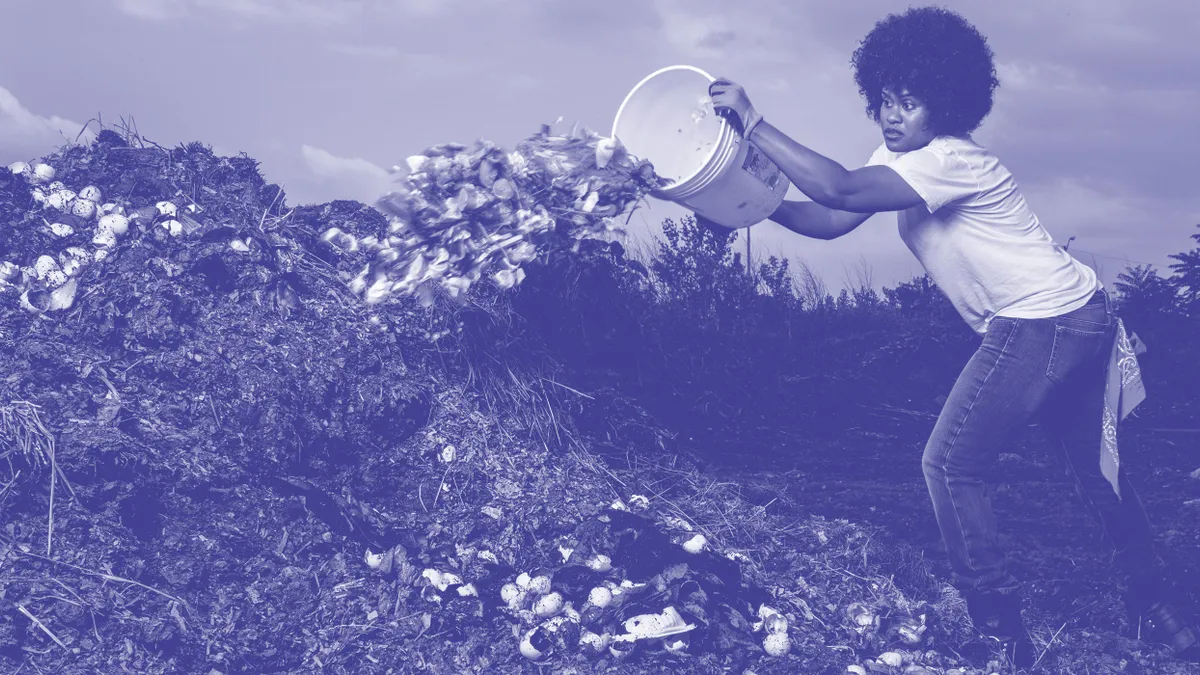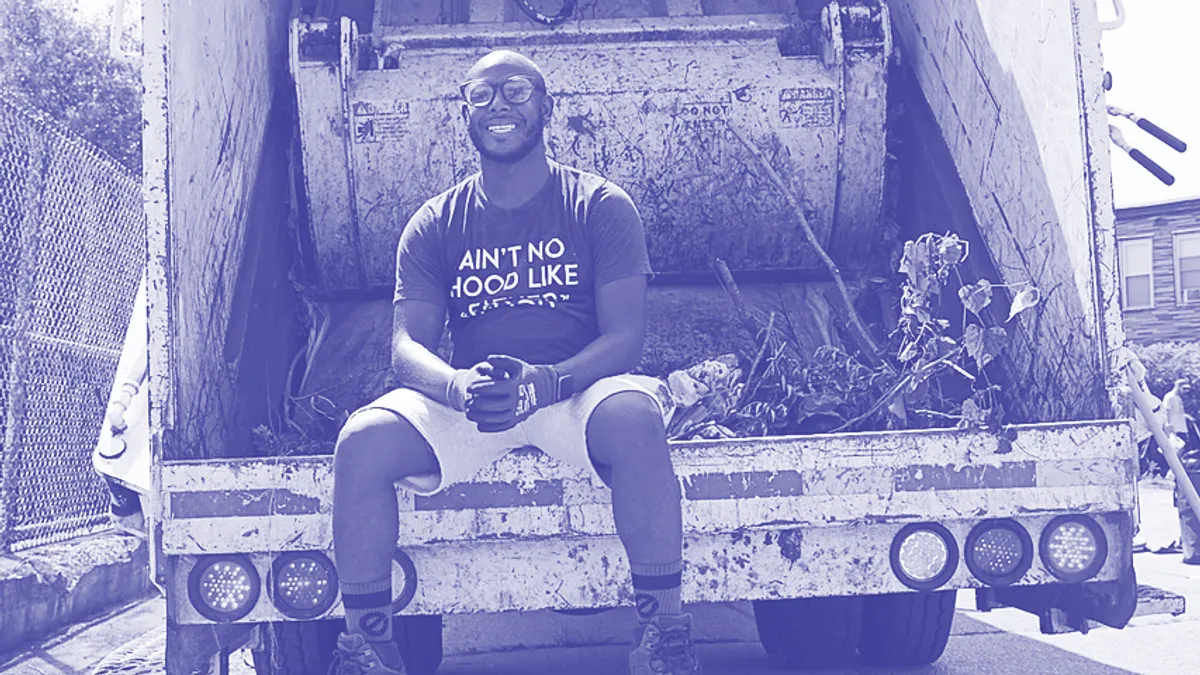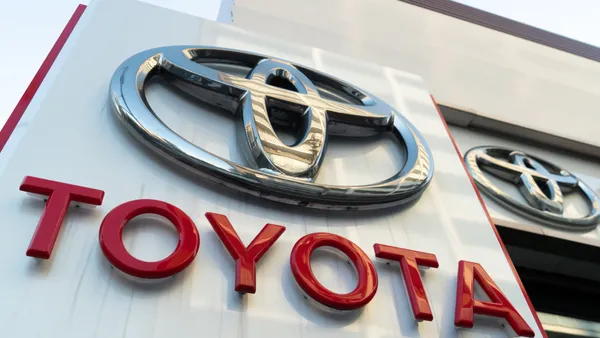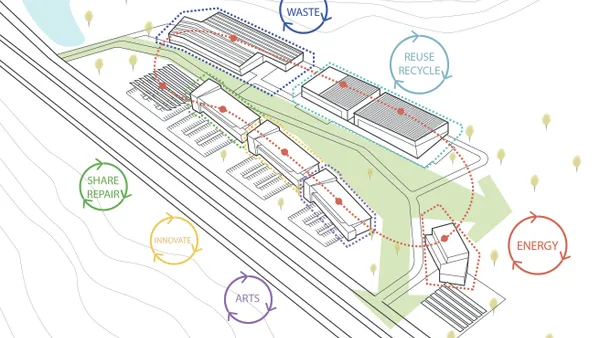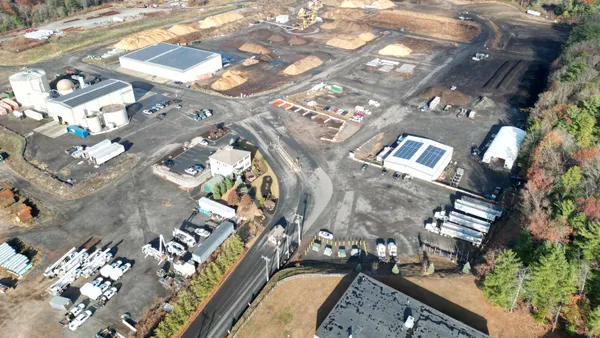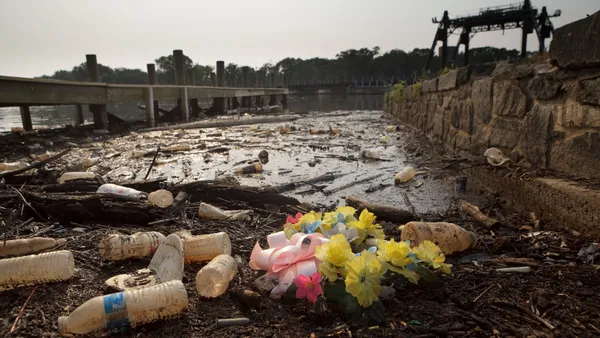This Q&A is the first in our newest series of conversations about how environmental justice shows up in the waste and recycling community, who is most affected, and what can be done to make lasting changes.
In the last few years, leaders, regulators and activists have asked the waste industry is being asked to be more proactive with how it approaches environmental justice. That can mean everything from considering it in siting and permitting processes to seeking to understand and minimize impacts on the communities where landfills, recycling facilities and organics processors operate.
Carlton Waterhouse, the U.S. EPA’s deputy assistant administrator for the Office of Land and Emergency Management, is among the voices calling for the industry to think more critically about its role in the environmental justice movement. Waterhouse, who first worked on EJ issues when he was an EPA attorney in the 1990s, is known for supporting programs meant to protect disadvantaged communities from air and water pollution. He has also spoken about the disproportionate impacts pollution has on Black residents and how racism and discrimination he faced has motivated him to center EJ issues in his work.
The Biden administration has also called for EJ to be a priority through programs like Justice40 and through funding from the Infrastructure Investment and Jobs Act. The funding includes $375 million for local waste management, infrastructure and recycling, including grant programs. The EPA will solicit stakeholder input on those programs and send out a request for information before the end of the year, Waterhouse said, and it will post updates on when and how the infrastructure grant application process will start.
Waterhouse recently talked with Waste Dive to urge industries to trust in the power of community-based relationship-building and commit to operational improvements that go beyond the EPA regulations. He also previewed new maps and tools the EPA aims to roll out later this year to help facilities plan green improvements or engage more directly with underserved or overburdened neighbors, as well as how these efforts fit into the EPA’s long-term EJ strategy.
This interview has been edited for length and clarity.
The Biden administration has said repeatedly that environmental justice is a priority. What does that really look like in terms of programs and efforts that are in the works, and how might that be relevant to how waste and recycling industries are currently operating or will need to operate in the future?
President Biden has directed us as leaders within EPA to make sure that we are clearly integrating environmental justice considerations into our plans and actions. That is reflected in our strategic plan, which now includes an unprecedented goal to advance environmental justice for the agency. The EPA also created the recently-released EPA equity plan. It's brought in a recent environmental justice adviser to the administrator. Robin Collin is a fantastic law professor who's written about environmental justice and taught about environmental justice and sustainability for a long time.
Of course, there is also our National Recycling Strategy and also some of the ongoing efforts within OLEM to address the way we handle and manage different waste streams. A plastics strategy, electronics strategy and food loss and waste strategy [are coming soon].
These are not really a set of obligations [for the waste and recycling industries], but to the degree that facilities are interested in addressing and fostering environmental justice, there are, certainly, things that they can do. Environmental justice begins with understanding what impacts you're having across all of your activities in the communities where you are located.
One example is just to be a good neighbor, meaning you understand the footprint that you have in your neighborhood. You're aware of the noise impacts; you're aware of the odor impacts; you're aware of disease vectors that might be associated with your operation. You're aware of how particulates from your facility are impacting your neighbor; you're conscious of surface water runoff coming from your facility and how that's impacting your local community as well as groundwater impacts that come from your operations. Even truck traffic.
You’ve mentioned before that the way we think about environmental justice should go beyond what’s merely regulated by the EPA. For example, you’ve talked about how facilities can look at how their environmental impacts combined with the cumulative impacts of all the industries in the communities where they operate. Why is this an important focal point for you?
The community where you're located is not experiencing your operations in a vacuum. They are experiencing them as part of a totality. All of us live somewhere, and so we all know what it's like to live in a community and be impacted by the multiple sources of odor, noise, traffic, surface water.
We want operators to think about their operations from that lens rather than from the lens of whether the EPA has an extensive regulation related to it or not. So how does your truck traffic combine with other truck traffic? How does the noise from your operation combine with other noise operations? How does potential particulate matter coming from your operation impact or combine with other particulate matter?
Someone might think, “If I see there’s an economic advantage, and the regulations don't prevent me from doing it, who cares what my neighbors think?” But that perspective is inconsistent with furthering and fostering environmental justice, right? That's not how you're a good neighbor.
It's about being cognizant and conscious. It means using best practices in the way you run your operation that will limit your impacts on your community. It means having not just a clean operation, but working toward a green operation, an operation that moves beyond the minimal level of what's going to be expected and moves towards an exemplary level — a level of operation that your neighbors can brag about you rather than complain about you.
It also means employment opportunities and thinking about how you are creating opportunities for young people in your community. How are you setting up green pathways for young people to go into your industry? How are you working with local schools [in ways] that would help to raise the level of environmental awareness and education in your community?
It also means, ultimately, being engaged — so, talking to the members of your community to find out, from their perspective, what are you doing right and what are you doing wrong, and to be open to make changes as possible to help to address community concerns.
To me, environmental justice kind of starts right there from a brass tacks level. Where the EPA comes in is encouraging facilities, through our new national recycling strategy and through new infrastructure grant money, to move toward green operations. The grant money that we're making available could help build the capacity of communities to have these kinds of operations.
Part of how we center equity and environmental justice is the way that these programs and efforts make sure, from the beginning, that no communities are left behind and that these industrial operations don't have to be adversarial in their relationships with communities. In fact, they can enhance community life through employment and through good green practices.
What other resources does the EPA offer to help waste and recycling operations orient themselves to the environmental justice conversation and get more specific information and tools?
Our Office of Environmental Justice has a list of other grants and resources that are available and a lot of other good resources relative to how community members can further foster support of environmental justice.
We also want people to understand the basics of environmental injustices and what that might mean. Some recent data shows the very close relationship between people's exposure to pollution and historic practices of redlining across many places in the country. So operations can understand how they fit within that historical footprint as a better way of getting a sense of environmental injustice as well, to see how past practices of racial discrimination may have influenced some of the zoning and land-use decisions around them. It will help them to better understand how their communities came to exist, who came to live there then, who does live there now, and what limited options might they have had historically.
With that in mind, I wanted to let folks know about several projects to improve how environmental justice relates to recycling and waste reduction goals. Under the National Recycling Strategy, part of the implementation plan includes conducting an environmental justice assessment of nonhazardous solid waste management infrastructure across the country.
We’re going to examine nationwide data and infrastructure — including landfills, incinerators, transfer stations, materials recovery facilities and chemical recycling facilities — to understand the extent to which this infrastructure may have disproportionate impacts on certain communities. We think that can help communities address environmental justice when new infrastructure is being developed and being sited. It’s going to allow us to track national progress, too.
We also are creating a market development toolkit, where we're collecting case studies, success stories, ideas and resources on improving markets and compiling them into a reference tool. That toolkit would be a first step to helping people address the local market development challenges that are related to this kind of work. And we're going to use that toolkit to help communities with environmental justice concerns so they can consider recycling markets as potential redevelopment options.
And then, lastly, later this summer, we're going to be publishing a new map of recycling infrastructure across the country. That's going to include our environmental justice mapping and screening tool data, EJ Screen's data, as well. Now the map is going to identify and display information on estimated waste generation, estimated recycling, estimated recycling potential by ZIP code and locations of recycling infrastructure, potential primary and secondary markets, market factors like tipping fees [and] bottle deposits, as well as solid waste infrastructure, including transfer stations, and is going to support transportation infrastructure as well, such as rail.
We're also going to publish an update on our excess food opportunities mapping tool. It is going to support the diversion of excess food from landfills, and it's going to display facility-specific information about potential generators and recipients of excess food in both the commercial, industrial and institutional sectors. It’s going to have the location of nearly 1.2 million potential excess food generators and display the locations of communities with source-separated organics programs, and about 5,000 potential recipients of excess food. So it's going to really do a lot to help policymakers, advocates, funders and organizations redirect resources to overburdened and vulnerable areas.
We’ve talked a lot about what waste and recycling facilities can do, but we know that fenceline communities and grassroots organizations also play a huge role in advocating for their own neighborhoods and the impacts of industry on their daily lives. How does the EPA view the grassroots community’s role in this conversation?
The agency is doing more around connecting directly with grassroots efforts from fenceline communities. It’s critical to get the perspective of communities with environmental justice concerns [that are] near the facilities. That means the EPA is doing so much more stakeholder engagement.
I worked for EPA back in the '90s, and the level of stakeholder engagement that I see happening at all levels of the agency is really, really very high now. We're spending a lot of time talking to people in the public to better understand their experience and their needs. I think it is reflected in webinars, trainings and public meetings. When [Administrator Michael Regan] went on the Journey to Justice tour, he worked hard to make sure that we're listening and hearing and seeing people in their experience.
I want to encourage folks to really be thoughtful about staying engaged. I've recommended in other settings that people become a part of sustainability and resilience action planning projects with their communities. The change in weather is already here, and these [climate] impacts are going to hit their facilities, too. If they haven't taken the time to do the analysis to understand what those impacts are going to be on their operations, as well as their bottom line, they're at a disadvantage. Also, their communities are at a greater disadvantage because they don't know what the impacts are going to be, whether it's extreme weather or extreme heat events or something else.
Being engaged with the community just once or twice is kind of like an extracurricular activity. We want to see it be a regular process, whether it's quarterly or semi-annual meetings, being part of a community task force, or setting up some other kind of group. It's a bottom-line way to move forward and align with working towards environmental justice. To be honest, it also helps ameliorate complaints of environmental injustice by being open to engage with community concerns and finding ways to reduce your footprint together.
Every community's concern is not the same. Some people may be concerned about one thing, and some people may be concerned about others. It doesn't just have to be a matter of “either we operate, or we don't.” It’s about the conversation.









